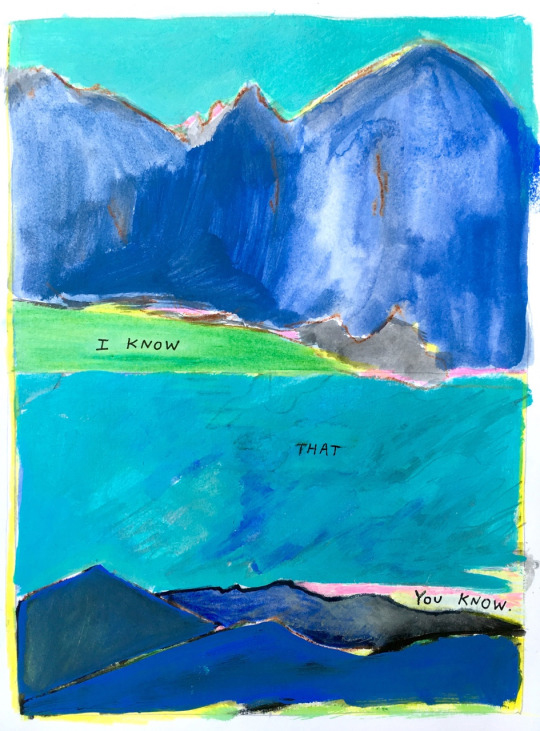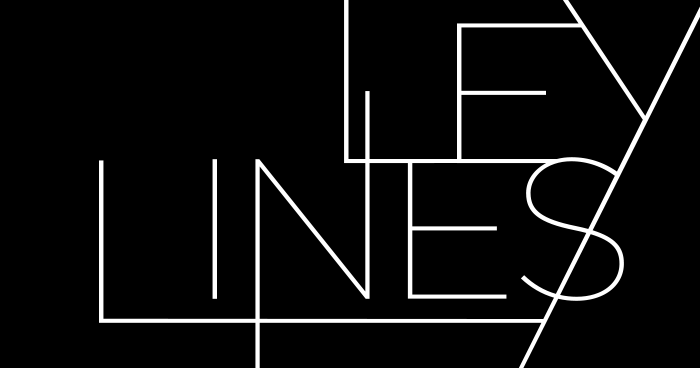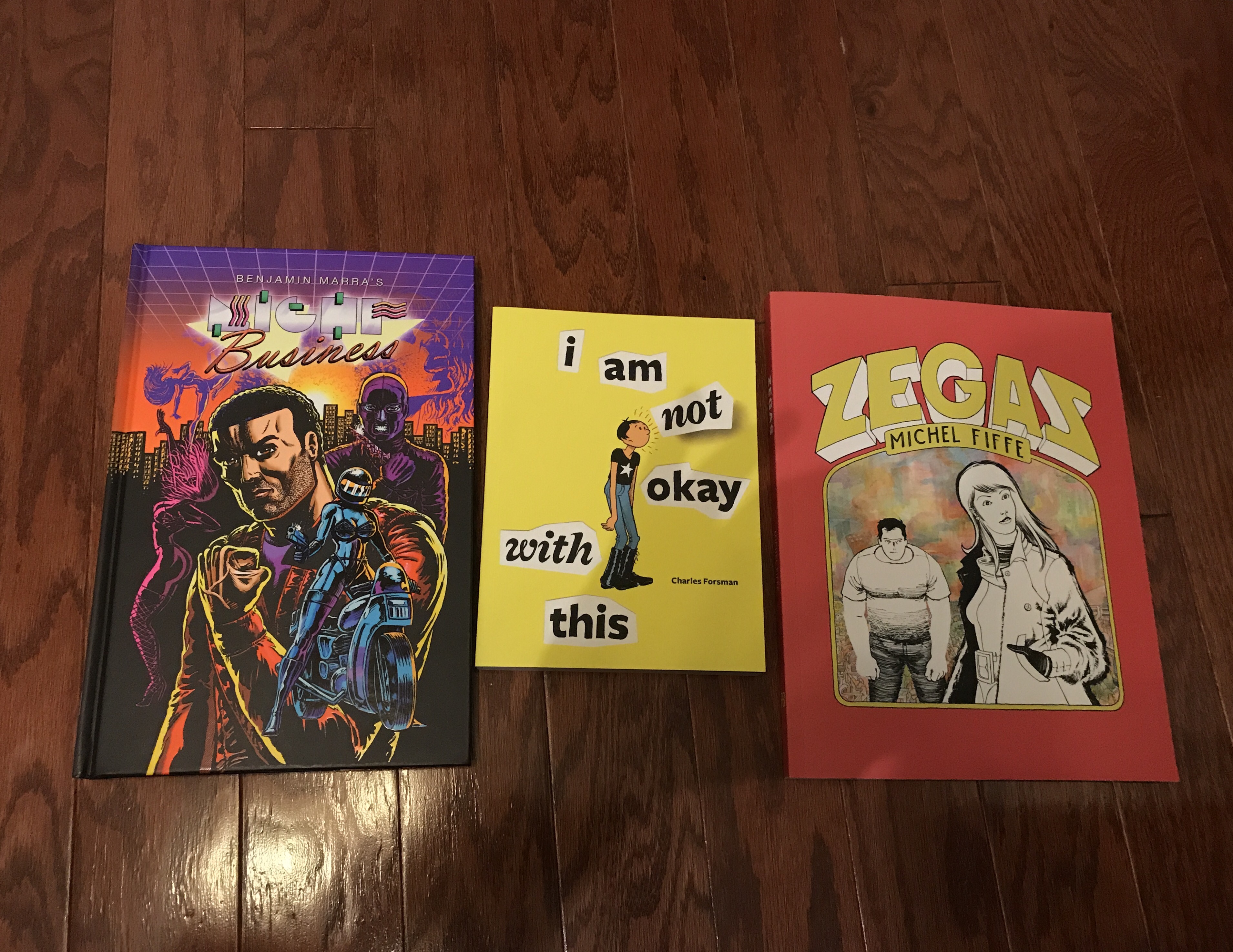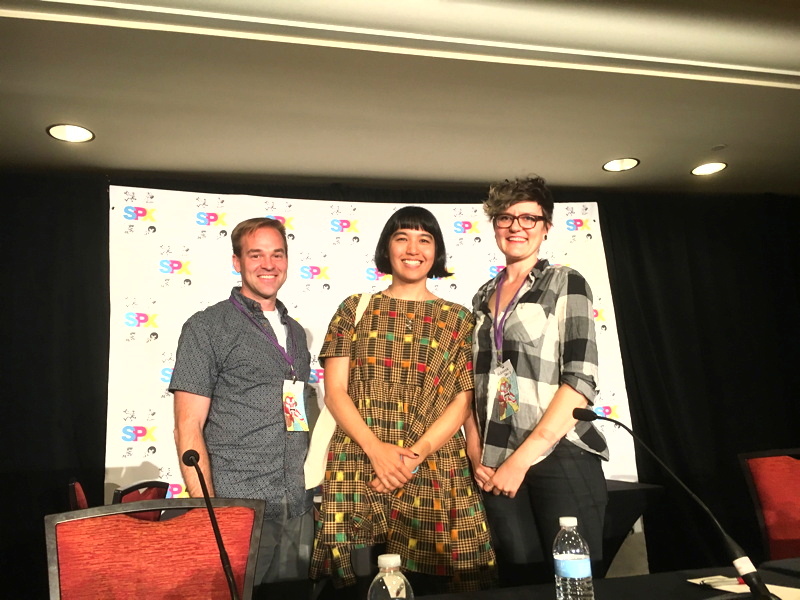Small Press Expo (or SPX) nonprofit created in 1994 to promote artists and publishers who produce independent comics. It’s mission is to “To provide a forum to showcase new and emerging talent in the fields of comics, graphic novels and political cartooning”. In the spirit of this mission, the Comics Beat has conducted a series of interview with some of the phenomenal cartoonists in attendance at this year’s Small Press Expo. We hope that these interviews will improve our understanding of these creators voices, techniques, interests and influences.
In this sixth SPX 2017 interview, we talked with Alyssa Berg. Alyssa is a comic artist based in Brooklyn. She’s also led some workshop for the Comics Workbook in the past as well. I didn’t quite know what to expect when I reached out to Alyssa. Her comics act as poetry. I had seen some of her contributions to Inkbrick and her winning entry to the Comics Workbook Composition Competition (a short comic called ALPENGLOW), but I hadn’t delved into her work quite as much as I should. Speaking with her gave me the chance to discover her fabulous poetic comics and the depth at the heart of her work. She gracefully accepted to chat with me about poetry, ALPENGLOW and insomnia.
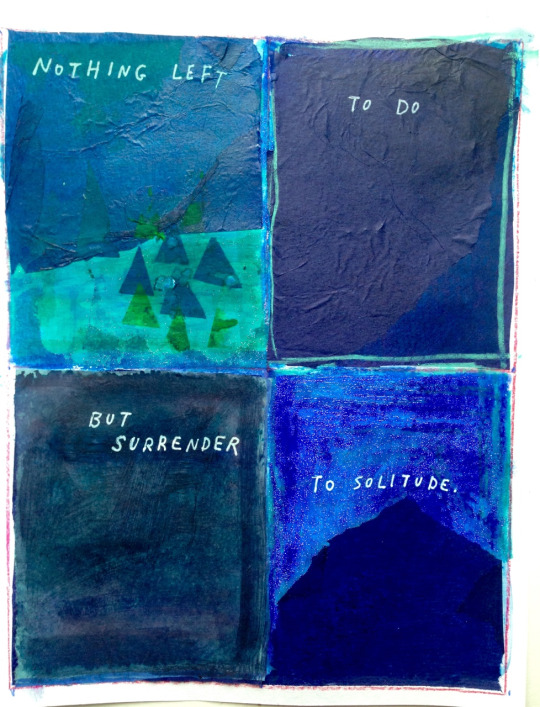
—
Philippe Leblanc: For those readers who may not be familiar with you and your work, can you tell us a little bit about yourself?
Alyssa Berg: I am originally from the Northwest and have lived in New York for the past 11 years. At my day job I am a gilder. Between gold-leafing, making comics, and self-publishing, it feels like I’m never not crafting (which is mostly a great feeling!). I studied painting and in 2012 I began to focus on making painted comics. In these comics, I investigate and experiment with a variety of materials, including collage elements. The writing is emotional, poetic. For the first few years, I consistently shared my comics online on Tumblr and at the Comics Workbook site. More recently I have been getting into the printing and self-publishing aspects of my work—figuring out how to translate full-color painted comics into beautiful, affordable books. I’ve been learning and printing at the SVA RisoLab where I will be the Artist in Residence this Fall.
PL: I find it hard to describe your comics properly. They are poetic, wonderful and meaningful. The emotions you convey stays with the reader after they’ve put down your comics. You are doing a lot of autobiographical comics, but it seems you’re trying to reach a sort of universality, or a shared space with the readers. How do you manage to distance yourself to expand those original emotions?
AB: I am very conscious of working toward this universality, or shared space with the reader, especially in the writing phase. Part of that process is refining and reaching toward an emotion or feeling that is relatable. Sometimes I take an anonymous-sounding, single line from a longer piece I’ve written that seems to hold the weight of the whole piece—extracting the most potent portion—and use that to build a comics page around. An amazing thing about being human is that we share so many common feelings and emotions, even though they come from our own unique experiences. I try to allow space in the work and trust that I have given the reader enough to draw a connection. Then it is mine, theirs, and ours. It’s always tricky to not get too heavy-handed when dealing with emotional-stuff. When I feel I’ve gone too far out, I remove specifics and details, cover up/paint over, or cross things out.


PL: One of my favourite comic of yours is ALPENGLOW, a comic you made for the 2015 Comics Workbook Composition Competition. This competition is putting a lot of restriction on the format artist can submit, in that case, it was a 3 x 3 panel grid. Have there been lessons you learned from this competition you were able to bring back and integrate in your work since?
AB: The best thing the competition did was get me out of working in the single-page, four panel grid format. It was three years of that format on repeat—hundreds of pages! While it was good to explore elements of comics in a consistent structure, the competition gave me a reason to try something new. I am much more flexible and willing to experiment with different grids these days.
PL: You mentioned in an interview with Kevin Czap over at the Comics Workbook that with ALPENGLOW, “you made a conscious decision to re-imagine that story through kinder eyes. I have the tendency to go toward a heavy-hearted place but I wanted to be more positive, for myself and the people who read it.”
If you hadn’t gone through that process, the story would be heavier. Did you find it hard to make a more positive comics since heavier ones come to you more naturally?
AB: ALPENGLOW is an auto-bio story about living at a ski resort with my first love. It’s true, yes, eventually there was a sad ending. For this particular story, instead of recalling the tragic/dramatic events, I chose to focus on the beauty of everyday life. This made it easy to see the sweeter side of the story. I really wanted to honor that period of my life and have a record of the sublime, day-to-day existence. So, no, it wasn’t too difficult. It just required a conscious shift in perspective.

PL: Your latest comic, Open Letter to Sleep is a love letter and poetic exploration of insomnia. What made you want to tackle this subject?
AB: Open Letter to Sleep was made for 30 Days of Comics (a comic a day for the month of November). I had participated previously in 2014 and came up with a new comic every day. It was too much! So last October, in preparation, I wrote an epic poem to my insomnia and broke it into 30 parts. I explored this subject because I was about a month in to a bout of insomnia and it was nearly all I could think about. Writing about the pains of insomnia also felt universal. Around that time so many people told me stories of their sleepless nights, and my favorite: their home remedies for curing insomnia. It was also fun to play with the parallels between lost sleep and lost love. Inside of each is this desire for a thing you can’t have, that you once had, that is causing pain and out-of-the ordinary behavior.
PL: Do you have any new comics or material you’re bringing to SPX? If so, can you tell us a little bit more about them/it?
AB: At SPX, I will have a new 12-page poem called No Man is an Island that I illustrated and turned into a 4 color Risograph mini-zine. One of my goals was to use restraint and NOT use florescent pink (I almost always do). It is black, blue, green, and orange ink on electric yellow paper. I made it (from idea to the finished booklet) over the course of 2 days. Occasionally when I make books/zines, they come forth in a burst of energy. No Man is an Island is definitely a burst.
PL: What do you want readers to take with them once they’ve finished reading your comics?
AB: That’s a difficult question! I’m not sure what I hope the take away is. But I do hope while someone is looking at my work they might experience color sensation, have a reaction to the materiality of the page/book, or just feel some feelings.
—
You can follow Alyssa Berg’s work on her website or on her tumblr. She will be at SPX this weekend at table A13B-14 with her latest comic No Man is an Island and her other comics. She’s looking forward to meeting you!
